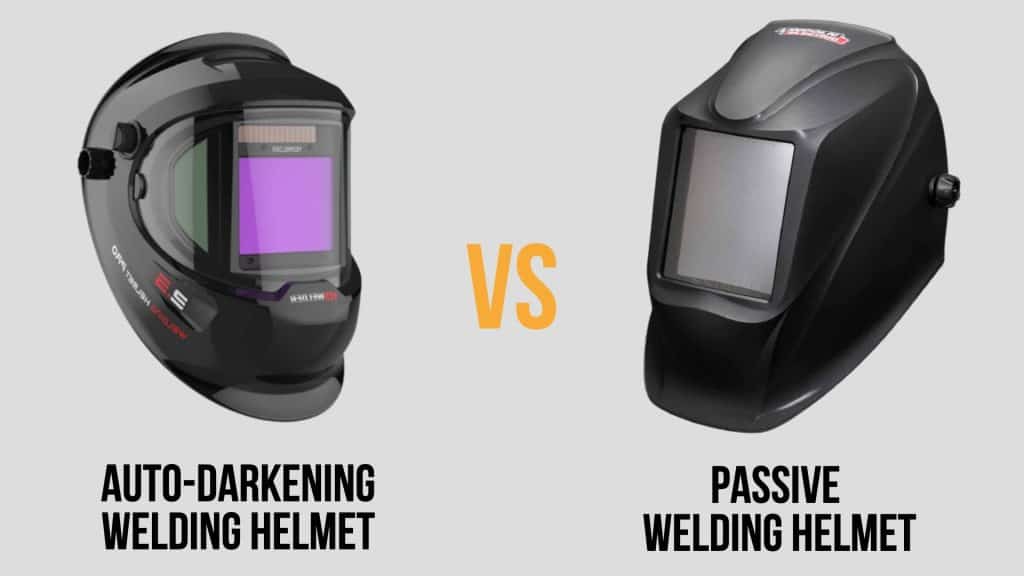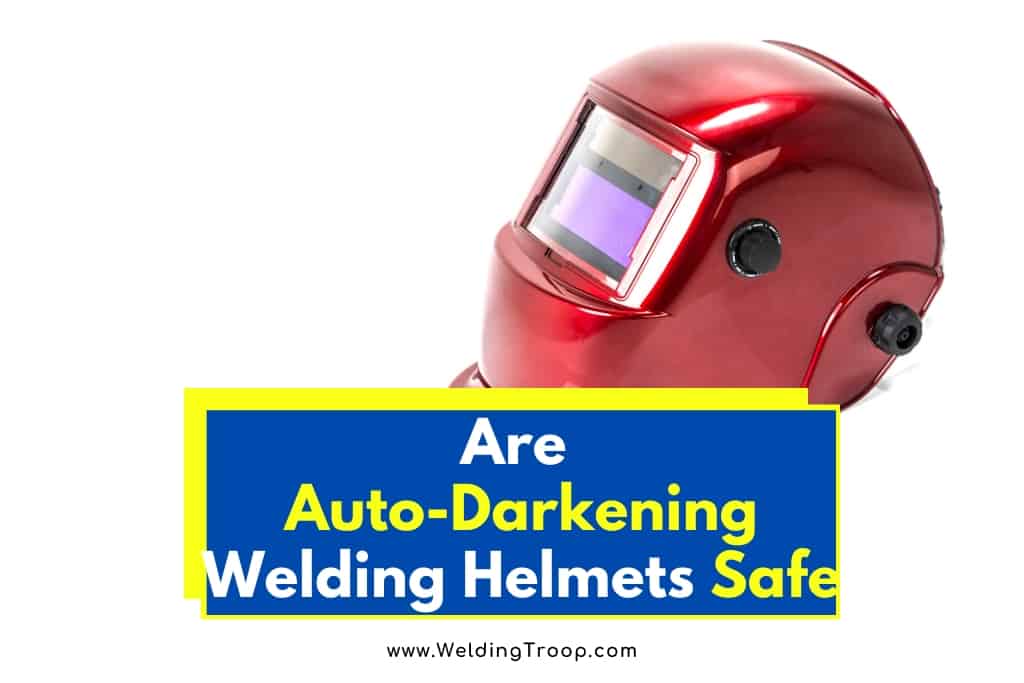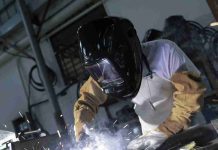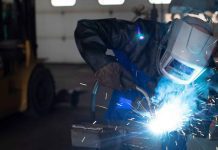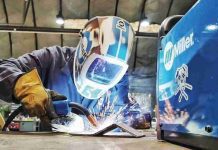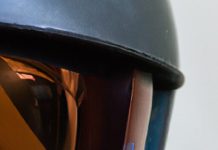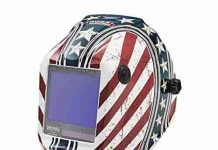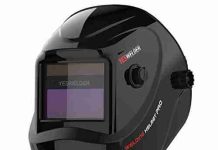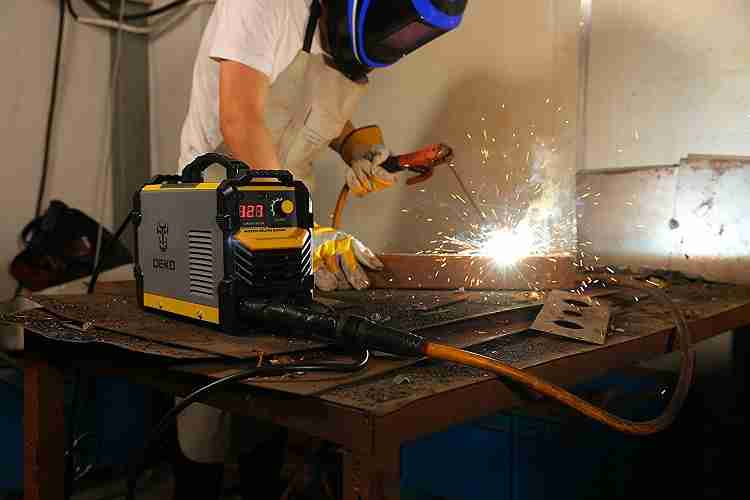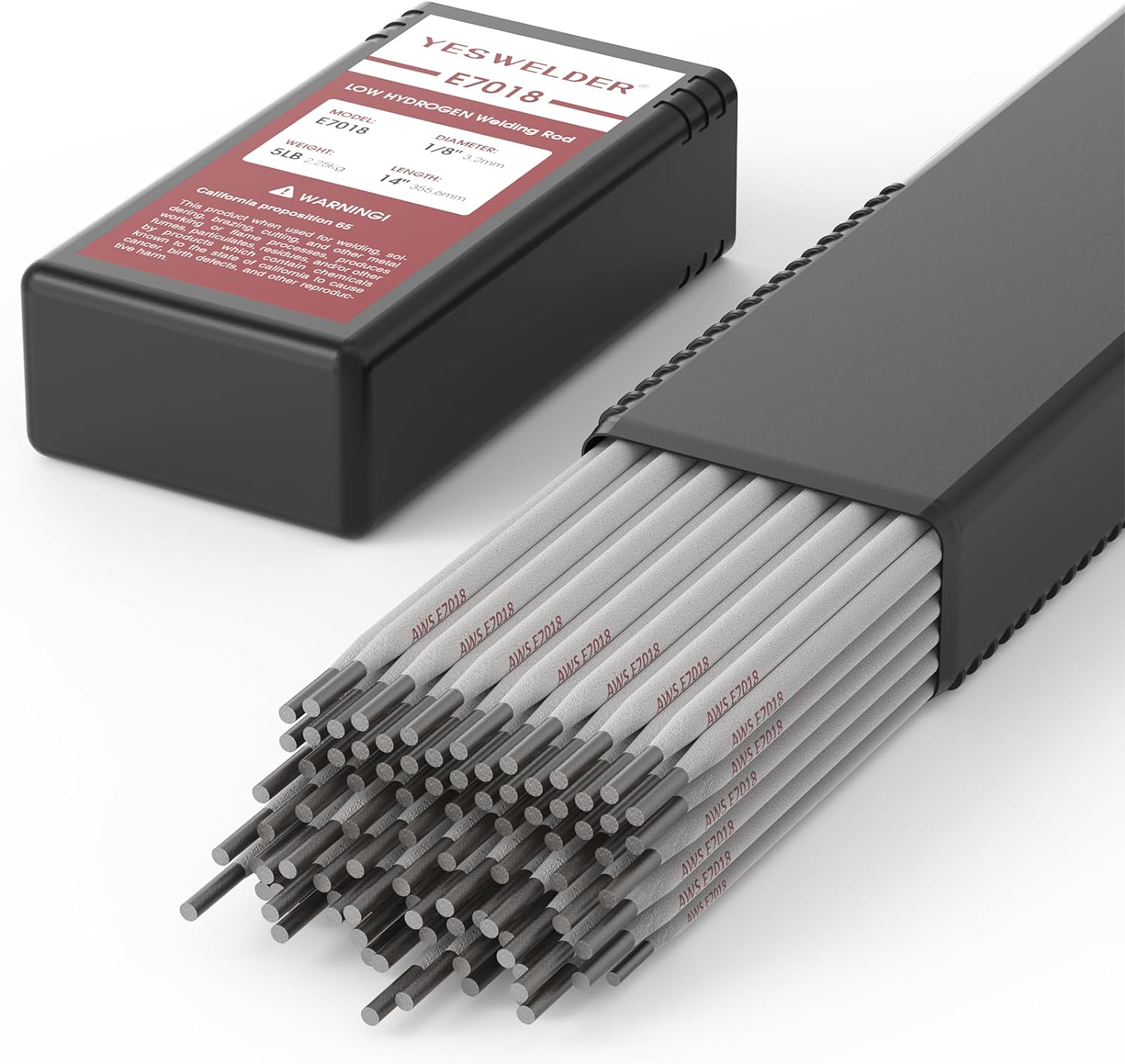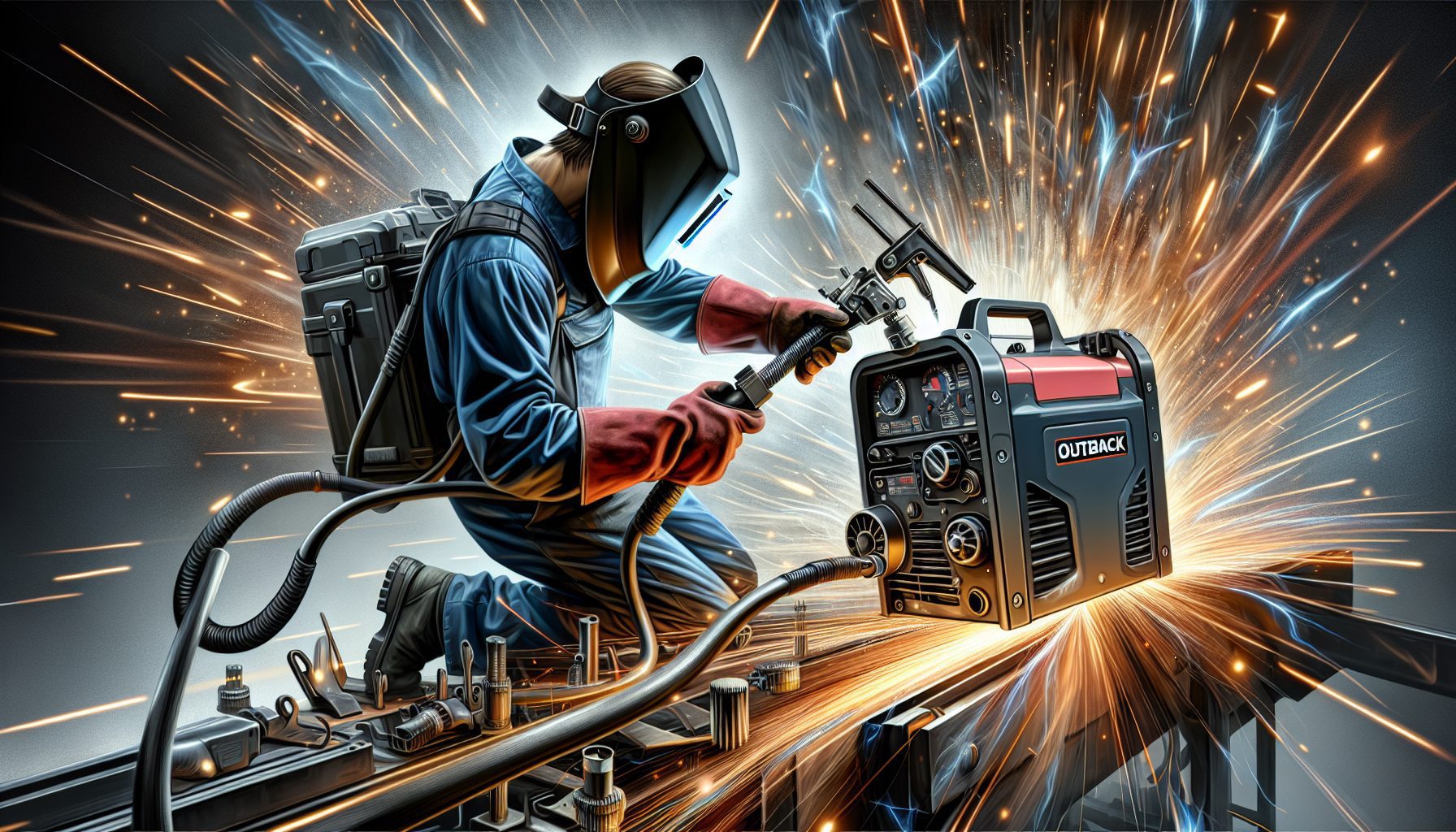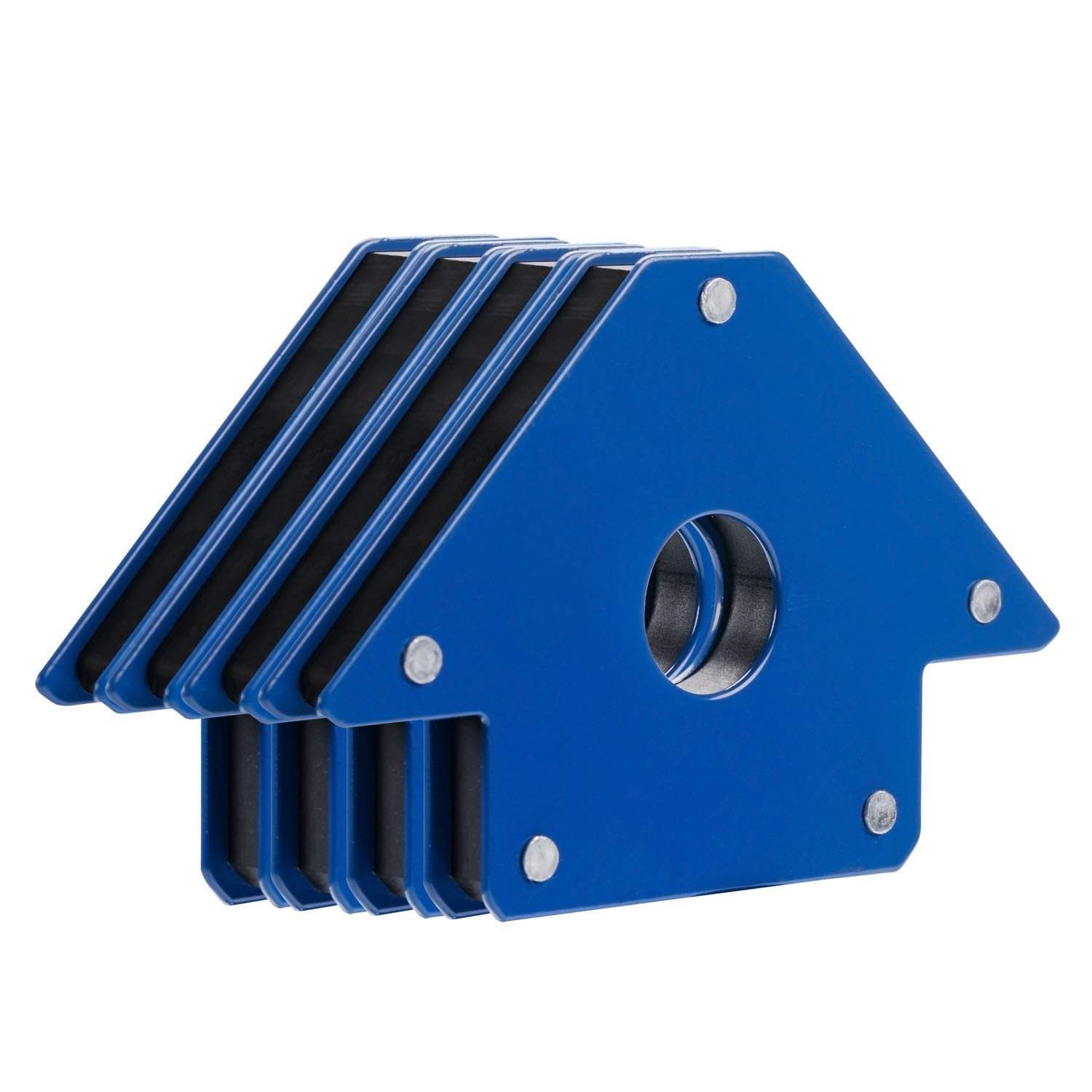Greetings! Today, we will be discussing an important question that often arises among welders: how long should a welding helmet last? We all know that safety should never be compromised when it comes to welding, and the lifespan of a welding helmet plays a vital role in ensuring the well-being of welders. In this article, we will explore the factors that determine the durability of these helmets and provide valuable insights into how long they should ideally last. So, let’s put on our welding goggles and dive into the fascinating world of welding helmet longevity!
This image is property of waterwelders.com.
Factors affecting the lifespan of a welding helmet
Quality of the helmet
The quality of a welding helmet is a significant factor in determining its lifespan. Higher-quality helmets are typically made from durable materials that can withstand the harsh conditions of welding. They are designed to be more resistant to heat, sparks, and impacts, which can greatly extend their lifespan. On the other hand, lower-quality helmets may be more prone to damage and may need to be replaced more frequently.
Frequency of use
The frequency of use also plays a role in how long a welding helmet will last. If a helmet is used frequently for long periods of time, it will naturally experience more wear and tear. The constant exposure to heat and sparks can cause the materials to deteriorate faster. In contrast, helmets that are used less frequently will generally last longer, as they have less exposure to potential damage.
Type of welding
The type of welding being performed can also impact the lifespan of a welding helmet. Different welding processes produce varying levels of heat, sparks, and debris. For example, TIG welding produces less heat and requires less protection compared to high-amperage stick welding or plasma cutting. Helmets used for more intense welding processes may wear out more quickly due to the increased exposure to these hazardous conditions.
Environmental conditions
Environmental conditions, such as temperature, humidity, and dust, can affect the lifespan of a welding helmet. Extreme temperatures, both hot and cold, can weaken the materials and compromise the integrity of the helmet. High humidity can cause moisture to seep into the lens or other components, leading to damage or deterioration. Additionally, excessive dust or debris in the workplace can accelerate wear and tear on the helmet.
Signs indicating the need for a replacement
Decreased visibility
One of the clearest signs that a welding helmet needs to be replaced is decreased visibility. Over time, the lens of a helmet can become scratched, dirty, or damaged, impairing the welder’s ability to see clearly. This not only affects the quality of the weld but also poses a safety hazard. If the visibility through the helmet is compromised, it is important to replace the lens or the entire helmet to ensure adequate vision protection.
Damage to the lens
Damage to the lens of a welding helmet is another indication that it may need to be replaced. Cracks, chips, or deep scratches can compromise the effectiveness of the helmet in protecting the welder’s eyes and face from sparks, UV radiation, and debris. If the lens is damaged to the point where it cannot be repaired or cleaned properly, it is essential to replace it to maintain optimal safety during welding.
Strap wear and tear
The straps and headgear of a welding helmet are crucial for securing the helmet in place and providing a comfortable fit. Over time, the straps may become worn or frayed, compromising their ability to hold the helmet securely. If the straps are stretched, torn, or no longer provide a snug fit, it is recommended to replace them. This ensures that the helmet stays in position during welding and reduces the risk of accidents or injuries.
Loose or broken parts
Inspecting a welding helmet for loose or broken parts is important for determining its lifespan. Components such as knobs, knobs, or fasteners that are loose, broken, or missing can affect the functionality and safety of the helmet. If any parts are damaged beyond repair or cannot be tightened properly, it is advisable to replace them. Regularly checking for loose or broken parts can help identify issues early and prevent potential accidents or further damage.
Typical lifespan of different helmet components
Helmet shell
The lifespan of a welding helmet shell can vary depending on the quality of the helmet and the conditions it is exposed to. A high-quality helmet shell made from durable materials, such as polycarbonate, can last several years. However, if the helmet is consistently exposed to extreme heat, sparks, or impacts, the lifespan of the shell may be significantly shortened. It is important to regularly inspect the shell for cracks, warping, or any signs of damage that could affect its protective capabilities.
Auto-darkening lens
The auto-darkening lens is one of the most critical components of a welding helmet. Its lifespan is influenced by the quality of the lens, the frequency of use, and the conditions it is exposed to. A high-quality auto-darkening lens can last for several years, but its lifespan may be reduced if not properly maintained or if subjected to excessive heat or impact. Regular cleaning and inspection are essential to prolonging the lifespan of the lens.
Batteries
Many welding helmets with auto-darkening lenses are powered by batteries. The lifespan of these batteries can vary depending on the type of battery used and the frequency of use. Generally, batteries in welding helmets can last anywhere from several months to a couple of years. It is important to monitor the battery life and replace them as needed to ensure the auto-darkening feature functions properly and reliably.
Headgear and suspension system
The headgear and suspension system of a welding helmet are responsible for providing a comfortable and secure fit. The lifespan of these components can vary depending on the quality of the materials and the frequency of use. A well-maintained headgear and suspension system can last for several years, but they may need to be replaced if they become worn, loose, or uncomfortable. Regular cleaning and inspection can help identify any issues and extend their lifespan.
Prolonging the lifespan of a welding helmet
Proper storage and maintenance
Proper storage and maintenance are crucial for prolonging the lifespan of a welding helmet. When not in use, the helmet should be stored in a clean, dry, and dust-free environment. It is recommended to keep the helmet in a protective case or bag to prevent any accidental damage or exposure to harmful elements. Regularly inspecting the helmet for any signs of wear or damage and addressing them promptly can help prevent further deterioration.
Regular cleaning
Regularly cleaning a welding helmet is essential for maintaining its performance and extending its lifespan. The lens should be cleaned after each use to remove any residue, debris, or smudges that can impair visibility. Mild soap and water or specialized lens cleaning solutions can be used to clean the lens without damaging the coatings. Additionally, it is important to clean the exterior of the helmet to remove any dust, dirt, or welding spatter that may accumulate.
Avoiding excessive heat exposure
Excessive heat exposure can significantly shorten the lifespan of a welding helmet. When not in use, the helmet should be kept away from direct sunlight and sources of heat. Leaving the helmet in a hot environment, such as inside a vehicle on a sunny day, can cause the materials to degrade and weaken. It is essential to store the helmet in a cool and dry place to prevent any heat-related damage.
Preventing impacts and drops
Protecting a welding helmet from impacts and drops is crucial for maintaining its integrity and prolonging its lifespan. Dropping the helmet or subjecting it to frequent impacts can cause cracks, fractures, or other damage that may compromise its protective capabilities. It is important to handle the helmet with care, avoid placing heavy objects on top of it, and use protective cases or bags when transporting or storing it.
This image is property of plasmacuttercenter.com.
Investing in a high-quality welding helmet
Benefits of a durable helmet
Investing in a high-quality welding helmet has several benefits. A durable helmet made from quality materials provides better protection against heat, sparks, UV radiation, and debris. It is more likely to withstand the rigors of welding, including high temperatures and potential impacts. A durable helmet also tends to have better visibility and a more comfortable fit, enhancing the overall welding experience and reducing fatigue.
Comparing price vs. quality
When considering a welding helmet, it is essential to compare the price with the quality of the helmet. While it may be tempting to opt for a cheaper helmet, it is important to assess its durability, features, and the level of protection it offers. Investing in a higher-quality helmet may initially cost more, but it can provide better long-term value by lasting longer and providing superior protection. It is advisable to prioritize quality and safety over cost when choosing a welding helmet.
Certifications and safety standards
Checking for certifications and adherence to safety standards is crucial when purchasing a welding helmet. Look for helmets that are certified by reputable organizations, such as the American National Standards Institute (ANSI). Helmets that meet ANSI Z87.1 standards ensure they provide appropriate eye and face protection during welding. Additionally, certain welding processes may require specific certifications or standards, so it is important to consider these factors when selecting a helmet.
Customer reviews and recommendations
Customer reviews and recommendations can provide valuable insights into the quality and performance of a welding helmet. Reading reviews from other welders who have used the helmet can help gauge its durability, comfort, and overall satisfaction. Pay attention to recurring comments about the lifespan of the helmet and any common issues or concerns. Additionally, seeking recommendations from experienced welders or industry professionals can help narrow down the options and choose a reliable welding helmet.
Determining the need for replacement
Frequency of use
The frequency of use is a significant factor to consider when determining the need for a welding helmet replacement. Helmets that are used extensively on a daily basis may start showing signs of wear and tear sooner than helmets used less frequently. It is necessary to regularly evaluate the condition of the helmet to ensure it remains in optimal working condition, particularly if it is used frequently or subjected to intense welding processes.
Severity of damage or wear
The severity of damage or wear on a welding helmet is a clear indicator of the need for replacement. If the helmet has significant cracks, broken parts, or a severely damaged lens, it is essential to replace it. Minor wear and tear can often be repaired or addressed, but if the damage is extensive and compromises the functionality or safety of the helmet, a replacement is necessary.
Lack of proper functionality
A welding helmet should provide reliable protection and function as intended. If the helmet experiences issues with auto-darkening, the lens fails to properly darken or lighten, or any other functional problems arise, it may need to be replaced. Helmets that do not consistently provide the necessary protection cannot be relied upon for safe welding practices.
Personal preference
Sometimes, the decision to replace a welding helmet may come down to personal preference. As technology advances, new features and improvements may become available that can enhance the welding experience. If a welder wishes to upgrade to a helmet with additional features or a more comfortable design, it is entirely reasonable to replace the existing helmet. Personal comfort and satisfaction are important aspects to consider when determining the need for a replacement.
This image is property of weldingtroop.com.
Importance of regular inspections
Detecting early signs of deterioration
Regular inspections of a welding helmet are essential for detecting early signs of deterioration. By closely examining the helmet, any cracks, worn straps, loose parts, or other issues can be identified before they worsen. Catching these signs early allows for timely repairs or replacements, preventing potential accidents, injuries, or compromised protection during welding.
Preventing potential hazards
Regular inspections help prevent potential hazards associated with a worn or damaged welding helmet. A helmet with cracks or a damaged lens, for example, may fail to provide adequate protection against heat, UV radiation, sparks, and debris. By promptly addressing any issues discovered through inspections, welders can maintain a safe working environment and reduce the risk of accidents or injuries.
Ensuring consistent protection
Regular inspections ensure that a welding helmet consistently provides the necessary protection. As components wear out over time or become damaged, the helmet’s effectiveness in safeguarding the welder may be compromised. By regularly inspecting and maintaining the helmet, welders can ensure that their eyes and face are consistently protected, maintaining high levels of safety throughout their work.
Industry recommendations and standards
ANSI Z87.1 standards
The ANSI Z87.1 standards are widely recognized and respected in the welding industry. They define the requirements for eye and face protection devices, including welding helmets. Helmets that meet these standards are designed to provide adequate protection against the hazards associated with welding. It is recommended to choose a welding helmet that complies with these standards to ensure proper safety and protection.
AWS guidelines
The American Welding Society (AWS) provides guidelines and recommendations for welding safety. These guidelines cover various aspects of welding, including personal protective equipment (PPE) such as welding helmets. Following AWS guidelines and recommendations can help ensure that the welding helmet chosen meets the necessary safety standards and offers sufficient protection for the specific welding process.
Manufacturer recommendations
Manufacturers of welding helmets often provide specific recommendations for the maintenance, inspection, and replacement of their products. These recommendations should be followed closely to ensure the helmet’s maximum lifespan and optimal performance. The manufacturer’s guidelines may include instructions for cleaning, storage, and other maintenance practices to help extend the helmet’s usable life.
Warranty coverage
Many welding helmet manufacturers offer warranty coverage for their products. It is advisable to review the warranty terms and conditions when purchasing a helmet. Warranties can provide protection against defects in materials or workmanship and may also cover specific components or functions of the helmet. Understanding the warranty coverage can help determine whether a repair or replacement is covered for any issues encountered during the helmet’s lifespan.
This image is property of www.austgen.com.au.
Common misconceptions about helmet lifespan
Indefinite lifespan
One common misconception about welding helmets is that they have an indefinite lifespan. Some welders may assume that once they have purchased a helmet, it will last forever without needing any repairs or replacements. However, like any other piece of equipment, welding helmets are subject to wear and tear and will eventually need to be replaced. The lifespan of a helmet can vary depending on several factors, as mentioned earlier in this article.
Overestimating lifespan
Another misconception is overestimating the lifespan of a welding helmet. While high-quality helmets can last for several years, this does not mean they will remain in perfect condition for their entire lifespan. The intense heat, sparks, and impacts associated with welding can significantly shorten the lifespan of a helmet. It is important to regularly inspect the helmet, address any issues promptly, and replace it when necessary to maintain optimal safety and protection.
Ignoring wear and tear
Some welders may be tempted to ignore signs of wear and tear on their helmets, assuming they can continue using them without consequences. However, ignoring wear and tear can compromise the functionality and safety of the helmet. Cracked shells, damaged lenses, or worn-out straps can all reduce the effectiveness of the helmet in providing adequate protection. It is crucial to address wear and tear promptly to ensure consistent protection during welding.
False sense of security
Lastly, a common misconception is relying too heavily on a welding helmet without considering other safety measures. While a welding helmet is a crucial piece of personal protective equipment, it is not the only safety measure that welders should rely on. Additional safety practices, such as proper ventilation, wearing appropriate clothing, and following welding procedures, are all essential for maintaining a safe working environment. A welding helmet should be seen as a part of a comprehensive safety strategy, rather than the sole means of protection.
Conclusion
The lifespan of a welding helmet can be influenced by various factors, including the quality of the helmet, frequency of use, type of welding, and environmental conditions. Regular inspections, proper storage, and maintenance, as well as prompt replacement when necessary, are all crucial for ensuring the helmet’s effectiveness and providing consistent protection. By investing in a high-quality welding helmet and following industry guidelines and standards, welders can prioritize safety and extend the lifespan of their protective gear. Understanding the signs indicating the need for a replacement and dispelling common misconceptions can contribute to a safer and more efficient welding experience.
This image is property of waterwelders.com.



